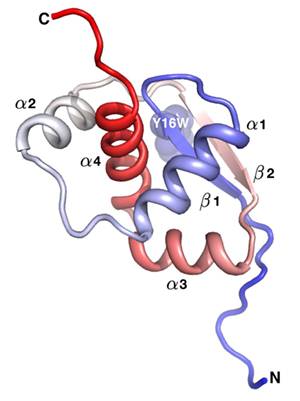
 中央研究院 生物化學研究所
中央研究院 生物化學研究所
MJ0366 from Methanocaldococcus jannaschii is the smallest topologically knotted protein known to date. 92 residues in length, MJ0366 ties a trefoil (31) knot by threading its C-terminal helix through a buttonhole formed by the remainder of the secondary structure elements. By generating a library of point mutations at positions pertinent to the knot formation, we systematically evaluated the contributions of individual residues to the folding stability and kinetics of MJ0366. The experimental Φ-values were used as restraints to computationally generate an ensemble of conformations that correspond to the transition state of MJ0366, which revealed several nonnative contacts. The importance of these nonnative contacts in stabilizing the transition state of MJ0366 was confirmed by a second round of mutagenesis, which also established the pivotal role of F15 in stapling the network of hydrophobic interactions around the threading C-terminal helix. Our converging experimental and computational results show that, despite the small size, the transition state of MJ0366 is formed at a very late stage of the folding reaction coordinate, following a polarized pathway. Eventually, the formation of extensive native contacts, as well as a number of nonnative ones, leads to the threading of the C-terminal helix that defines the topological knot.
